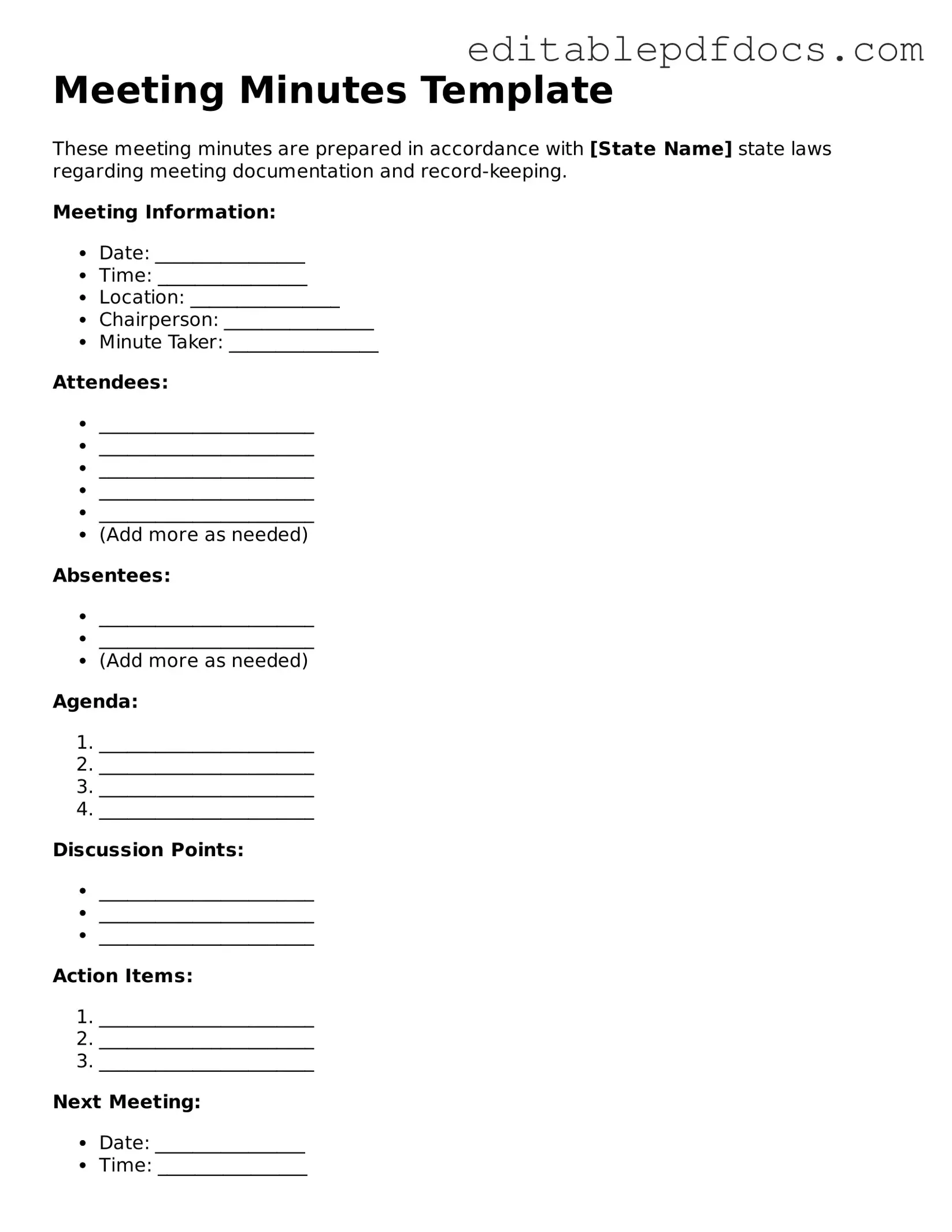Meeting minutes serve as an essential tool for documenting the discussions, decisions, and actions taken during a meeting. These records not only provide a clear account of what transpired but also ensure accountability among participants. A well-structured meeting minutes form typically includes key elements such as the date, time, and location of the meeting, as well as a list of attendees and absentees. Additionally, it captures the agenda items discussed, the outcomes of those discussions, and any action items assigned, complete with deadlines and responsible parties. By maintaining a consistent format, organizations can streamline their meeting processes and enhance communication among team members. Ultimately, effective meeting minutes can foster transparency and facilitate follow-up, making them a vital component of organizational operations.
